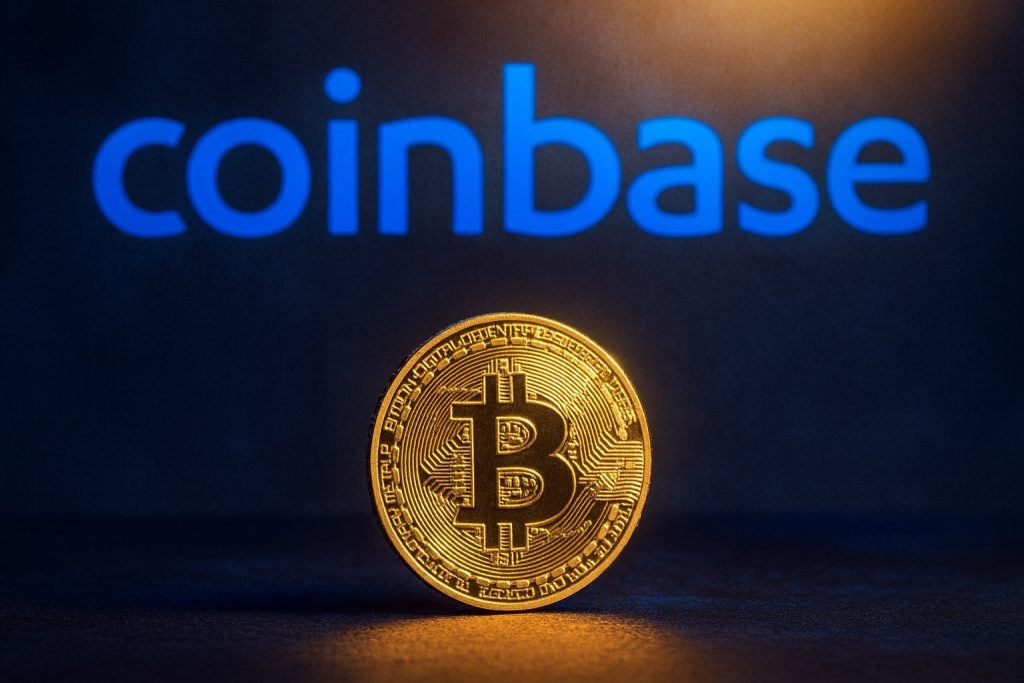- Rollercoaster month for MSTR: Strategy Inc (NASDAQ: MSTR) – formerly MicroStrategy – spiked to the mid-$350s per share in early October, then tumbled below $300 by mid-month, a ~20% drop as Bitcoin pulled back from record highs [1]. Shares traded around $290 as of Oct. 20, roughly flat year-to-date, lagging Bitcoin’s ~10% YTD gain [2].
- Giant Bitcoin stash: The company holds over 640,000 BTC (≈3% of all bitcoins) on its balance sheet – a hoard worth ~$70–$80 billion at recent prices [3]. This enormous treasury makes MSTR a “Bitcoin proxy” stock, surging when crypto soars and slumping when it falls [4].
- Record profits on crypto gains: New accounting rules let Strategy Inc mark its bitcoin to market, turning huge paper gains into GAAP profit. It posted a $10.0 billion net profit in Q2 2025 thanks to a $14 billion unrealized crypto gain [5]. Q3 2025 is also expected to be strongly profitable (~$2.9 billion net income) with Bitcoin rising from ~$107K to $114K in Q3 [6]. Despite two straight profitable quarters meeting S&P 500 entry criteria, index officials have so far declined to add this volatile stock [7].
- Wall Street divided: Analysts are split on MSTR’s outlook. ~15 analysts cover the stock with a “Moderate Buy” consensus (11 Buys, 2 Holds, 1 Sell) [8], but price targets range wildly from ~$175 on the low end to $700+ bullish cases [9]. The average 12-month target around $500–$560 implies ~50% upside from current levels [10]. Bulls tout MSTR as a high-leverage bet on Bitcoin’s upside, while bears warn the stock trades at a premium to its bitcoin holdings and could plunge if crypto falters [11].
- Saylor’s big bet: Executive Chairman Michael Saylor has reinvented the company as a “Bitcoin treasury” vehicle. Rebranding from MicroStrategy in 2025, Strategy Inc has raised an estimated $10–$12 billion via stock sales and even Bitcoin-backed preferred shares to buy more BTC [12]. This aggressive strategy boosted its stash from ~150,000 coins in 2021 to 640,000+ now [13]. However, it also introduced dilution, debt, and what one hedge fund famously criticized as a “Ponzi-like” reliance on ever-rising crypto prices [14].
MSTR Stock Rallies with Bitcoin, Then Retreats
Strategy Inc’s stock has been riding Bitcoin’s boom–and–bust cycle. In early October, crypto optimism swept Bitcoin to new highs around $125K–$126K, and MSTR shares surged in tandem [15]. The stock jumped about 6% on Oct. 1 alone after a favorable U.S. tax ruling on crypto, climbing from ~$338 at September’s end to roughly $355 by Oct. 3 [16]. Trading volumes spiked as MSTR – often seen as a high-beta crypto play – far outpaced the broader market’s gains during this “Uptober” rally [17].
But the euphoria was short-lived. Within days, Bitcoin suddenly plunged from $126K to under $110K [18], triggered by a wave of leveraged-position liquidations and gathering macroeconomic storm clouds. Escalating U.S.–China trade war fears – including reports of steep new tariffs out of Washington – plus persistent inflation data sent investors fleeing risk assets [19]. Crypto-exposed stocks like MSTR were hit hard. By Oct. 13, Strategy’s stock had sunk back to the low $300s, and it closed at $283.84 on Oct. 16 [20], losing about one-fifth of its value from the month’s peak. In that mid-October slide, MSTR broke below key technical support (its 50- and 200-day moving averages around $343–$350) as sentiment turned cautious [21].
Even after this pullback, MSTR is roughly flat for 2025 (down only ~1% year-to-date) and remains about 30% below its 52-week high of $473.83 set last November [22]. The stock’s round-trip – soaring with Bitcoin’s rise, then slumping with its downturn – underscores the core risk for investors: MSTR’s fate is tightly tethered to crypto market swings [23].
Massive Bitcoin Exposure Drives Volatility
Why the wild swings? Strategy Inc’s value is essentially its Bitcoin. The company has amassed approximately 640,000 BTC in its treasury (about 3% of all bitcoin that will ever exist) [24] [25]. At current market prices, that hoard is worth on the order of $70–$80 billion [26] – an eye-popping figure that exceeds the market cap of many S&P 500 companies. Strategy’s average cost basis for this stockpile is estimated around $46–47 billion [27], implying roughly $25+ billion in unrealized gains on the bet so far [28].
This outsized Bitcoin exposure makes MSTR behave like a leveraged Bitcoin ETF in disguise. When Bitcoin’s price jumps, MSTR’s assets swell and the stock often rises even faster. Indeed, over the past five years MSTR delivered triple-digit annualized returns during crypto bull runs, even outperforming Bitcoin itself at times – albeit with stomach-churning volatility and steep drawdowns in crypto winters [29] [30]. Conversely, when Bitcoin falters, MSTR shares can tumble hard. The recent whiplash – from mid-$300s to mid-$200s within weeks – occurred because Bitcoin’s “boom to bust” swing was amplified in MSTR’s stock [31] [32]. As one market analyst noted, “MSTR can rise faster than Bitcoin on the way up, but the descent can be just as swift or swifter” [33].
Notably, Strategy Inc kept buying bitcoin even at peak prices. The firm added nearly 2,000 BTC in late September and another ~220 BTC in early October despite Bitcoin hitting record highs over $120K [34]. Saylor has unabashedly doubled down on accumulating “digital gold,” arguing that Bitcoin is the ideal reserve asset for the future. “The world ran on gold-backed credit for 300 years… the next 300 years it will run on digital-gold-backed credit,” Saylor proclaimed [35] – underscoring his view that Bitcoin will underpin the financial system in decades to come.
Crypto Gains Fuel Record Profits (and S&P Hurdles)
For years, MicroStrategy (as it was then known) reported GAAP losses due to Bitcoin’s accounting treatment, even as its holdings grew. But in 2025, accounting rules changed to allow marking crypto assets to market value. The impact was dramatic: Strategy Inc swung to a record profit. In Q2 2025 the company posted $10.0 billion in net income (${32.60} per share) [36], versus a loss a year earlier – almost entirely due to a $14 billion unrealized gain from Bitcoin’s price surge [37]. (By comparison, quarterly operating revenue from its legacy software business is only around $100 million [38], meaning the crypto holdings now dominate financial results.)
Q3 2025 is also expected to be solidly profitable, with analysts estimating ~$2.9 billion net income as Bitcoin’s value climbed further during the third quarter [39]. That would give Strategy two consecutive profitable quarters, a milestone that technically satisfies one key criterion for inclusion in the S&P 500 index [40]. Speculation about S&P 500 inclusion swirled as MSTR’s market cap soared and its earnings turned positive. However, the S&P committee pointedly balked at adding MSTR in its September reviews, reportedly due to the stock’s extreme volatility [41] [42]. Being left out of the index was a symbolic setback for the company, but not a fatal one – it highlighted both MSTR’s outlier status and the continuing hesitation of traditional market gatekeepers to embrace such a high-beta asset.
Meanwhile, Strategy has been monetizing its crypto expertise in other ways. In Q2 the firm launched an innovative Bitcoin-backed perpetual preferred stock offering, raising $2.5 billion within days [43]. These preferred shares (trading under tickers STRF and STRD) offer hefty yields of ~9% to ~13%, essentially letting investors buy into the company’s Bitcoin bet with a fixed income twist [44]. The successful uptake of these instruments – STRF is trading above par, while the higher-yield STRD trades just below par [45] – signals strong institutional appetite for “Bitcoin-yield” products. This creative fundraising has helped strengthen Strategy’s capital position and fund additional Bitcoin purchases without relying solely on operating cash flow.
Bulls vs. Bears: What the Experts Say
Wall Street’s take on MSTR is sharply polarized. On one hand, bullish analysts see enormous upside if Bitcoin’s adoption continues. For example, Cantor Fitzgerald raised its price target to $697 (Overweight) over the summer, citing Strategy’s “outsized leverage” to Bitcoin gains and improved execution of its strategy [46]. TD Cowen in September gave an Outperform rating with a ~$620 target, arguing that even after this year’s run-up the market still “undervalues the expected BTC yield” and the company’s embedded operating leverage to crypto prices [47]. In this bullish view, MSTR offers a unique high-octane vehicle for riding a potential continued crypto boom – analysts note that every 10% rise in Bitcoin’s price should theoretically boost MSTR’s equity value even more, due to the compounding effect of its large holdings and funded purchases [48].
The bearish camp, however, warns that MSTR’s valuation is “out over its skis.” One firm, Monness Crespi Hardt, has a rare Sell rating and a $200 price target, implying over 50% downside [49]. Skeptics argue that Strategy Inc now functions like a leveraged Bitcoin ETF with extra risks: namely, a shrinking legacy software business, ongoing operating losses outside of crypto gains, and a complex capital structure loaded with debt and high-yield preferred stock [50]. Hedge fund manager David Einhorn of Greenlight Capital has even likened Saylor’s model to “Ponzi finance.” He points out that MSTR often trades at a premium above the value of its underlying bitcoin; the company then issues new shares at that premium to buy more BTC, which benefits existing shareholders only as long as new investors keep paying up. “The idea is to raise money from new investors at a premium and use the proceeds to buy more Bitcoin… [this] is dilutive to new investors but accretive to existing investors,” Greenlight wrote, essentially arguing the strategy requires continuously higher crypto prices to succeed [51].
Even some long-term believers acknowledge the elevated risks. Notably, Vanguard Group – the $10 trillion asset manager – has become one of the largest MSTR shareholders (indirectly, via index funds). Yet Vanguard’s own analysts have questioned the wisdom of any operating company betting its corporate future on crypto to this extent [52]. Few other CEOs have followed Saylor’s lead. Aside from Tesla (which holds ~10,000 BTC) and Block Inc. (~8,000 BTC), no other public operating company has amassed anything close to Strategy’s bitcoin hoard [53]. This underscores how unique – and risky – MSTR’s experiment is in the corporate world.
On the other side of the ledger, some heavyweight investors are indeed along for the ride. The California State Teachers’ Retirement System (CalSTRS), one of the largest U.S. pension funds, recently disclosed a $133 million stake in MSTR [54] – one of the biggest pension exposures to a crypto-linked stock. And as mentioned, passive index funds (like those managed by Vanguard and BlackRock) hold significant positions in MSTR due to its inclusion in the Nasdaq 100 and other indexes [55]. These institutions give an aura of legitimacy to Saylor’s strategy, even as many analysts remain skeptical. The debate rages on: Is MSTR an innovative vehicle for bitcoin exposure with savvy, forward-looking management – or a reckless gamble that could implode if Bitcoin’s fortunes reverse? Ultimately, as more than one commentator has observed, the answer likely depends on one’s outlook for Bitcoin itself [56].
Saylor Doubles Down – “Bitcoin as a Treasury Reserve”
Through it all, Michael Saylor has remained the unapologetic evangelist for Strategy Inc’s bitcoin-centric strategy. The 58-year-old co-founder, who gave up the CEO title in 2022 to serve as Executive Chairman (focused on bitcoin acquisition), has been relentlessly bullish and vocal. In public appearances and earnings calls, Saylor reiterates his thesis that Bitcoin is the “digital gold” of the 21st century and a superior store of value for corporations. “We’re in a hyper-growth, hyper-adoption phase for bitcoin as a treasury reserve asset,” Saylor said on a recent call [57], urging other companies to consider a similar strategy. He argues that large-scale adoption by firms and even governments is only a matter of time, given Bitcoin’s fixed supply and growing acceptance.
Critics have not deterred him. In fact, Saylor often pushes back hard against detractors. Just last week, amid the stock’s dip, he accused short sellers of running “bot-driven smear campaigns” to attack MSTR [58]. He defiantly defended the company’s vision, stating that MicroStrategy’s mission is to integrate Bitcoin into corporate finance as a core treasury reserve – effectively transforming the business from a software developer into a “digital asset holding firm,” as he describes it [59]. In Saylor’s view, the volatility is the price of being on the cutting edge of a financial revolution. “Volatility is vitality,” he has quipped in the past, suggesting that those who endure the swings will reap the rewards of Bitcoin’s long-term ascent.
True to form, Saylor continues to “buy the dip.” Over the past month, Strategy Inc raised additional cash through an at-the-market stock offering and pumped it into bitcoin. Regulatory filings show that between late September and early October, the company issued around $128 million in new equity and debt, then quickly deployed a chunk of that to purchase more BTC [60] [61]. Just this past weekend, Saylor announced the firm acquired another 219 bitcoins (≈$24 million worth), bringing the total holdings to about 640,250 BTC [62] [63]. He emphasized via social media that Strategy remains fully committed to its accumulation strategy, even as the stock price and crypto market gyrate. Saylor maintains that as long as the company can raise capital at a lower cost than Bitcoin’s expected return, it will continue adding to its treasury.
This aggressive approach has turned Strategy Inc into a symbol of institutional Bitcoin adoption – and left it heavily exposed to crypto’s every twist and turn. It’s a bold high-stakes bet that Saylor shows no sign of backing away from.
Regulatory Tailwinds vs. Macro Headwinds
Several external factors have been swinging MSTR’s fortunes in recent weeks. On the regulatory front, news has been mostly positive for crypto. Early October brought a major relief for Strategy Inc: the U.S. IRS issued guidance exempting unrealized crypto gains from the new 15% corporate minimum tax [64]. This crypto-specific tax break lifted a huge potential burden from companies like Strategy, effectively saving the firm billions in prospective taxes [65]. That announcement, combined with broader progress on U.S. digital asset legislation and optimism that a spot Bitcoin ETF would finally get approved, helped send Bitcoin to all-time highs in the first week of October [66]. The market was reassured that Washington was (at long last) providing clearer rules of the road for crypto. “Industry anticipation… helped rally bitcoin past $120,000 for the first time as investors cheered Washington’s long-awaited approval on digital assets,” Reuters noted of the regulatory momentum [67].
Around the same time, global developments signaled growing acceptance of Bitcoin. For instance, asset management giant BlackRock’s much-anticipated Bitcoin ETF in the U.S. edged closer to reality (with some products launching overseas), stoking hopes of major institutional inflows. In fact, BlackRock just launched a Bitcoin exchange-traded product in London this month as UK regulators eased restrictions [68] [69]. Moves like these suggest that institutional demand for crypto exposure is becoming mainstream. Saylor has argued that new ETF and fund offerings are “taking up all the natural supply” of bitcoin being mined, creating “inexorable upward pressure” on price over time [70].
However, macro-economic headwinds have hit risk assets hard in mid-October, reminding investors that Bitcoin (and by extension MSTR) is not a one-way moonshot. A flare-up in U.S.–China tensions and worries about interest rates contributed to a sharp crypto correction. In particular, the renewed trade war fears – punctuated by an early October announcement from President Trump’s White House of 100% tariffs on Chinese goods – spooked global markets [71] [72]. China’s own move to restrict exports of rare-earth metals crucial to tech also rattled investors [73]. These developments, alongside stubbornly high inflation readings and rising bond yields, have created a “risk-off” atmosphere. Investors have been rotating into safer assets; tellingly, gold and silver prices hit multi-year highs in recent weeks as some sought traditional hedges [74].
This macro turmoil prompted a broad sell-off in equities and crypto. Bitcoin swiftly fell ~15% from its peak, breaking below key support levels (it even dipped under its 200-day moving average – often seen as a bearish signal) [75]. That slide dragged MSTR down with it [76]. In effect, October has featured a tug-of-war between bullish crypto news (tax relief, regulatory clarity, ETF hopes) and bearish macro news (geopolitical strife, inflation pressure). The net result: heightened volatility for Bitcoin and MSTR alike.
Outlook: High-Stakes Bet on Bitcoin’s Next Move
Looking ahead, Strategy Inc’s trajectory will almost inevitably mirror the next major move in Bitcoin. In the near term, sentiment around MSTR is likely to remain choppy, reflecting these cross-currents in crypto and the broader economy. If the current “risk-off” mood persists – say, due to more negative inflation surprises or escalations in the trade war – Bitcoin could struggle to hold above ~$110K and might even retest the psychological $100K level, according to technical analysts [77]. Any dip toward six figures or below would undoubtedly pressure MSTR’s stock further, potentially keeping it languishing under key price averages in the weeks to come [78].
On the upside, crypto bulls argue that the recent pullback is a temporary breather within a longer uptrend. They point to catalysts on the horizon: for example, a potential Federal Reserve shift to easing if economic data softens, or the approval of a U.S. spot Bitcoin ETF (which many see as increasingly likely in the coming months). Such developments could reignite the “risk-on” trade and send Bitcoin climbing again. “I think Bitcoin will move up smartly again toward the end of the year,” Michael Saylor said recently, expressing confidence that the current macro headwinds will abate and new institutional demand will kick in [79]. He notes that demand from corporations, ETFs and investment funds is now soaking up most newly mined bitcoins, tightening supply [80].
Some analysts share Saylor’s optimism. A few even forecast Bitcoin could reach $150,000 by year-end 2025 if momentum returns [81]. Were that to happen, MSTR’s upside would be enormous. Company executives have floated an astonishing projection: at $150K BTC price, Strategy Inc might generate about $24 billion in net income for 2025 (roughly $80 EPS) [82], thanks to colossal mark-to-market gains. That implies the stock’s valuation could have much more room to run if Bitcoin’s next chapter is another surge [83]. Even absent that extreme scenario, a revival of Bitcoin’s rally toward new highs would almost certainly make MSTR one of the stock market’s big winners again, as it was earlier this year.
Conversely, if a deeper crypto winter sets in, MSTR would feel the chill disproportionately. The downside risks are real: a slide of Bitcoin back toward the $70K–$80K range (around Strategy’s aggregate cost basis) could erase the company’s paper profits and reintroduce financial strain, especially given its leveraged bets. Skeptics note that MSTR’s stock still trades at a premium to the value of its BTC holdings [84], so a significant Bitcoin decline might cause an outsized drop in the share price as that premium evaporates. In a worst-case scenario – for instance, if unexpected events caused a sharp crypto crash – Strategy’s adventurous financial structure (including debt and high-yield preferred obligations) could be stress-tested.
Bottom line: Strategy Inc’s stock is a bold, singular wager on the continued mainstreaming and rise of Bitcoin. For investors and observers, it offers high drama – fortunes can be made or lost in short order as this “Bitcoin proxy” swings with the crypto tide [85]. Over the coming weeks, all eyes will be on the key catalysts that could sway crypto sentiment: macro signals like inflation data, Fed policy hints, and geopolitical developments, as well as crypto-specific news like ETF decisions and regulatory moves [86]. If Bitcoin regains its footing and momentum, expect MSTR to bounce back sharply. If crypto struggles or another downturn hits, expect MSTR to feel the pain even more acutely.
As one analyst quipped, MSTR is the “high-volatility, high-beta ticket” for betting on Bitcoin [87] – and that cuts both ways. Would-be investors in Strategy Inc should buckle up and be prepared for both moonshots and gut-checks on this wild ride [88]. In essence, buying MSTR stock is a bet that Michael Saylor’s unwavering crypto conviction will ultimately be vindicated. It’s not for the faint of heart, but if Bitcoin’s boom resumes, Strategy Inc could once again rocket ahead of the pack.
Sources: Key information was drawn from Strategy Inc’s financial disclosures and earnings calls, as well as expert commentary in Reuters, CoinDesk, and market analysis outlets like TechStock² (TS2) [89] [90] [91]. These sources provide further details on Strategy’s performance, Bitcoin holdings, and the market factors influencing MSTR’s volatile run [92] [93].
References
1. ts2.tech, 2. www.coindesk.com, 3. ts2.tech, 4. ts2.tech, 5. ts2.tech, 6. ts2.tech, 7. ts2.tech, 8. ts2.tech, 9. ts2.tech, 10. ts2.tech, 11. ts2.tech, 12. ts2.tech, 13. ts2.tech, 14. ts2.tech, 15. ts2.tech, 16. ts2.tech, 17. ts2.tech, 18. ts2.tech, 19. ts2.tech, 20. ts2.tech, 21. ts2.tech, 22. ts2.tech, 23. ts2.tech, 24. ts2.tech, 25. ts2.tech, 26. ts2.tech, 27. ts2.tech, 28. ts2.tech, 29. ts2.tech, 30. ts2.tech, 31. ts2.tech, 32. ts2.tech, 33. ts2.tech, 34. ts2.tech, 35. ts2.tech, 36. www.reuters.com, 37. ts2.tech, 38. www.fxleaders.com, 39. ts2.tech, 40. ts2.tech, 41. ts2.tech, 42. www.fxleaders.com, 43. www.fxleaders.com, 44. www.coindesk.com, 45. www.coindesk.com, 46. ts2.tech, 47. ts2.tech, 48. ts2.tech, 49. ts2.tech, 50. ts2.tech, 51. ts2.tech, 52. ts2.tech, 53. ts2.tech, 54. www.fxleaders.com, 55. www.reuters.com, 56. ts2.tech, 57. www.reuters.com, 58. www.fxleaders.com, 59. www.fxleaders.com, 60. www.reuters.com, 61. www.reuters.com, 62. www.fxleaders.com, 63. www.coindesk.com, 64. ts2.tech, 65. ts2.tech, 66. ts2.tech, 67. www.reuters.com, 68. www.coindesk.com, 69. www.coindesk.com, 70. ts2.tech, 71. www.fxleaders.com, 72. www.fxleaders.com, 73. www.fxleaders.com, 74. ts2.tech, 75. ts2.tech, 76. ts2.tech, 77. ts2.tech, 78. ts2.tech, 79. ts2.tech, 80. ts2.tech, 81. ts2.tech, 82. ts2.tech, 83. ts2.tech, 84. ts2.tech, 85. ts2.tech, 86. ts2.tech, 87. ts2.tech, 88. ts2.tech, 89. ts2.tech, 90. www.reuters.com, 91. www.coindesk.com, 92. ts2.tech, 93. ts2.tech







